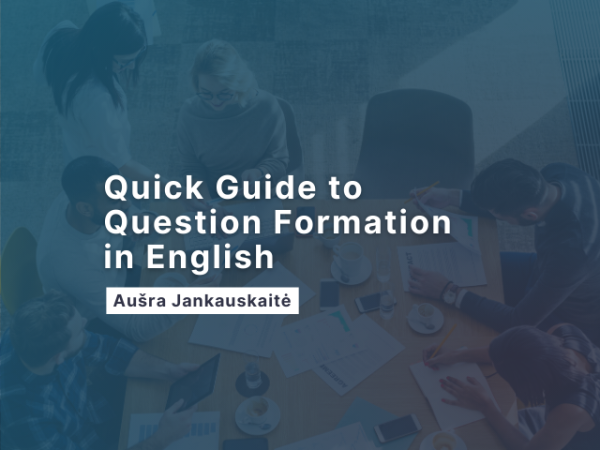
Description
Aim. To provide participants with the knowledge and practical skills to correctly form various types of questions in English and use them effectively both orally and in writing.
-
 October 15, 2025, 1:00–3:30 p.m.
October 15, 2025, 1:00–3:30 p.m. -
 Online training
Online training -
 Certificates issued
Certificates issued -
 Theory and practise
Theory and practise -
 Group 1 – general; Group 2 – professional activities
Group 1 – general; Group 2 – professional activities -
 Level A training programs (for beginners)
Level A training programs (for beginners)
Learning structure
Short description.
Quick Guide to Question Formation in English – short and practical lessons that will help you quickly master the basic rules of question formation in English, learn to recognize different types of questions, and apply them in real-life situations.
Content.
Introduction to question formation: familiarization with word order in questions, auxiliary verbs, forming simple questions. Theory and practice. 30 min.
Types of questions (Yes/No, Wh-, Tag): differences between question types; translating statements into questions, forming questions based on examples. Theory and practice. 45 min
Common mistakes: typical mistakes in questions, their analysis and correction, individual tasks. Theory and independent work. 30 min.
Application of questions in real situations: dialogues in pairs and groups, creating questions based on real-life situations, role-playing games.
Practice and independent work. 45 min.
Summary and reflection: short exercises for reinforcement, mini-test, general discussion, Q&A. Practice and independent work 30 min.
Tasks.
Learn the basic structure of questions and auxiliary verbs.
Distinguish between the main types of questions (yes/no, wh-, tag questions).
Practice turning statements into questions and avoiding common mistakes.
Apply skills in pair and group activities, reinforcing them through feedback.
Developed skills.
After completing this training, participants will be able to:
Apply the basic rules for forming questions in English.
Recognize and use different types of questions (Yes/No, Wh-, Tag).
Notice the most common mistakes in question structure and avoid them.
Create questions for real communication situations (dialogues, discussions).
Communicate more confidently and clearly in English, both verbally and in writing.
Duration. 2 hours and 30 minutes.
Place. Online training.
Target group. VMU academic and nonacademic staff and doctoral students.
Professional development activities by competency groups. Group 1 – general; Group 2 – professional activities.
Direction of professional development activities. Level A training programs (for beginners).
Teachers
Lecturer at the Institute of Foreign Languages, VMU